Penguins again

VulcanSpirit
Richard & Alison Brunstrom
Wed 9 Dec 2015 19:05
Just down the road from the boat is a breeding colony of African penguins Spheniscus demersus. The colony is claimed to be the easiest and best penguin viewing in the world, and, having tried lots of other sites around the world, I can believe it. 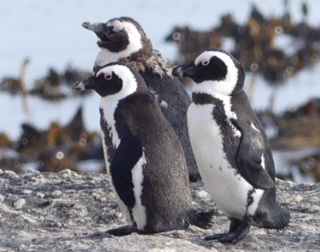 These guys are about 700mm tall. The bold black and white marking is in fact very effective camouflage of a type known as counter shading. Penguins are vulnerable to attack from both above and below. So they have dark backs to blend in from above when swimming on the surface, and light belies to make them lest obvious against the sky when seen from below. The dark chest band is characteristic of banded penguins generally, showing their close relationship with other banded penguins, for instance those found in Galapagos. Here they are swimming:  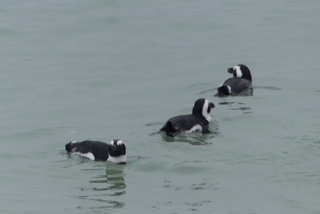 It's nesting season at present. African penguins are monogamous, and mate for life. Here is a pair at the nest, with the female lying down: 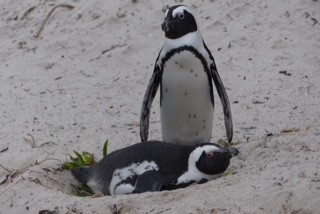 And here is the male returning from foraging with some ideal nesting material. A big colony can make quite a difference to the local vegetation - and to your seaside garden. The colony is now fenced! 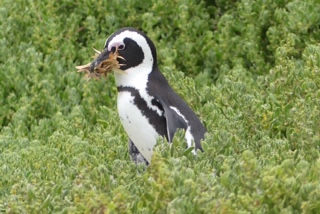 These birds were previously known as jackass penguins because of the amazingly loud braying noise that they make. Here is a male, giving it his all in an attempt to impress the ladies and humiliate the competition:  They are also known as black feet penguins: 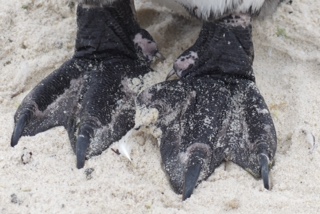 The chest markings are unique to the individual (it's that eager nest builder again, back with another beakful):  You may have noticed a pink patch above the eyes. Here it is in close-up: 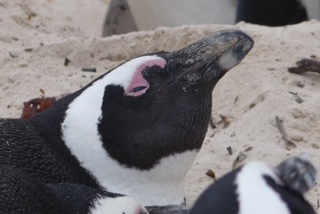 Penguins are warm blooded like all birds, and they are adapted to life in cold water for which they have developed a protective layer of blubber. But as a result they can easily overheat in the sunshine on land. This pink patch is a thermoregulation gland. If the bird is getting too hot additional blood is pumped to the patch of naked skin and heat is transferred to the atmosphere. It is amazingly efficient for such a simple mechanism - far simpler than a mammalian sweat gland, but carrying out the same function. They also have a salt excretion gland situated above the nostril - this enables them to drink salt water without destroying their kidneys. And the White patch on the lower bill is a target mark for the young - pecking this spot stimulates the adult to regurgitate food for the baby. Ugh, but it works for them. It is also the moulting season. Penguins moult annually, and have to stay on shore for twenty days to accomplish the task, during which time they cannot eat as the can't go to sea. So for twenty days they stay almost motionless, looking both sad and comical, rather like a good clown, surrounded by discarded feathers:   This colony has only been on this suburban beach for about thirty years. Prior to human settlement it was impossible for penguins to breed on the mainland because of predation by leopards and jackals. Now this is no longer a problem here the penguins have adopted this excellent habitat and are thriving with much support from the SA National Parks Service. But the species as a whole is not. Overfishing by humans has caused the collapse of their food supply - mainly anchovies and pilchards - leading to a decline in penguin numbers from perhaps 4 million in 1800, to 1.5m in 1900, to 200 000 in 2000, and to a tragic 55 000 in 2010. At this rate extinction looms in 15 years. Such a shame. |